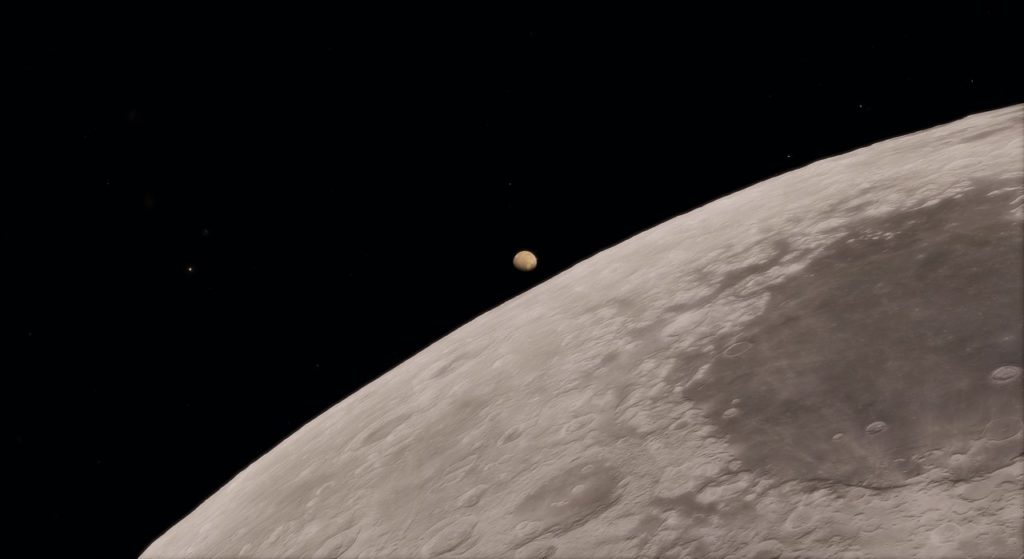Sky Report: October 5 – October 11

Mars is in the news this week because it is now closest to earth, so it’s at its biggest and brightest. The moment when it’s closest is 8:19 on the morning of Tuesday, October 6th, when it is 38,568,243 miles away. The news media will play up the 6th and advise you to look at it this night, but in reality Mars will look the same for a few weeks as it slowly begins to fade as the faster-moving earth leaves it behind. Mars comes this close only every 26 months so enjoy it now.
Next week you’ll hear that “Mars is at opposition” – it’s opposite the sun in the sky. Although an orbital milestone, it’s not as significant as Mars’ closest approach.
Mars rises shortly after sunset and by midnight it’s well up in the southeast. It’s the brightest object in the night sky other than the moon, and Venus after it rises, and it’s presently slightly brighter than Jupiter (which sets by 1 am). You can’t miss the Red Planet’s orange color which caused many earlier peoples to associate it with blood and war but which is caused by oxidized, or rusted, minerals on the surface.
Mars is disappointing through all but the most expensive home telescopes. It’s only twice the size of our moon but it’s 160 times as far away, so you have to magnify it 80 times for it to appear as large as our moon does to your naked eye, and then your telescope optics must be excellent and the air steady to see even the major surface markings. Astronomy apps like SkySafari will show you which features face earth at any given time.
Mars will fade in months to come but remains visible in the evening sky through next spring, fading week by week. The earth will next catch Mars on December 1, 2022.
For additional information Google “Mars opposition 2020”.
Elsewhere in the sky, Jupiter and Saturn are a third of the way up the southern sky at 8 pm; Jupiter is brighter than any star while fainter Saturn is to the left. Venus rises in the east after 4 am and is brilliant through morning twilight. Venus is four times brighter than Mars and is pure white in color. The star above Venus is Regulus, in Leo.
The Sky Report is presented as a public service by the Stellar Vista Observatory, a nonprofit organization based in Kanab, Utah, which provides opportunities for people to observe, appreciate, and comprehend our starry night sky. Additional information is at www.stellarvistaobservatory.org. Send questions and comments to John@StargazingAdventures.org.
Photo Credit: ESO/Nico Bartmann/spaceengine.org. Mars is the size of a small lunar crater.






Comments are closed.